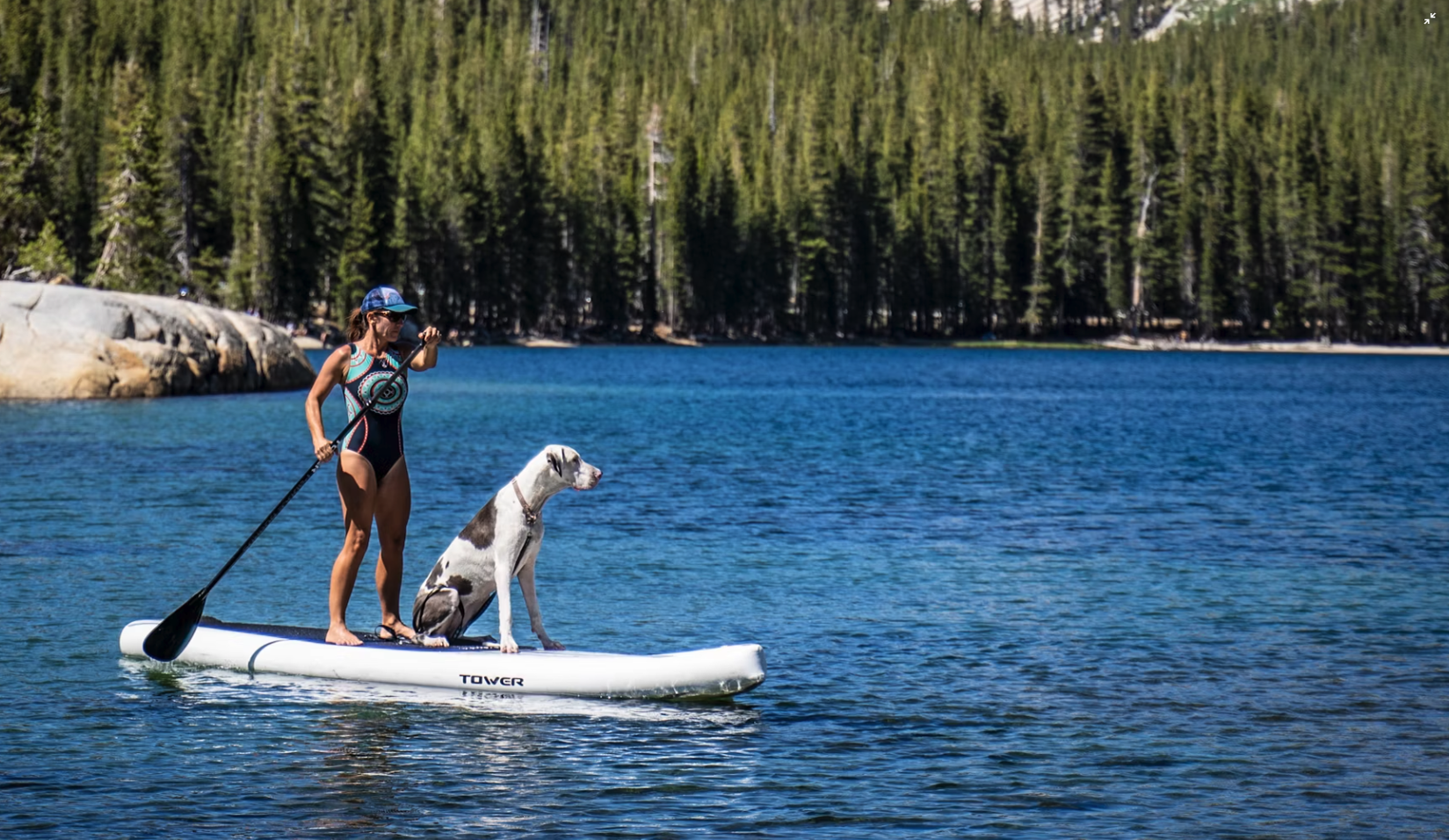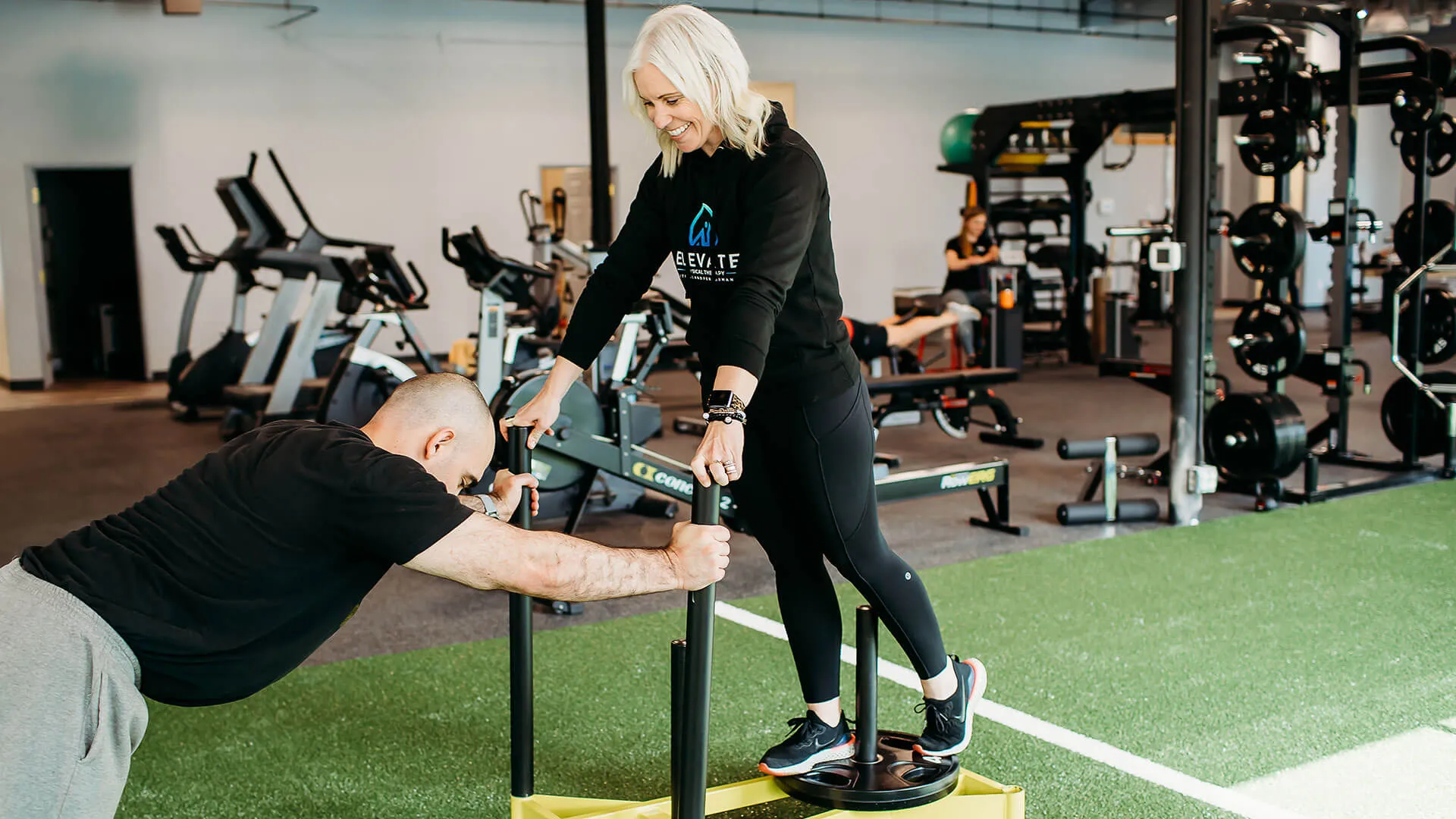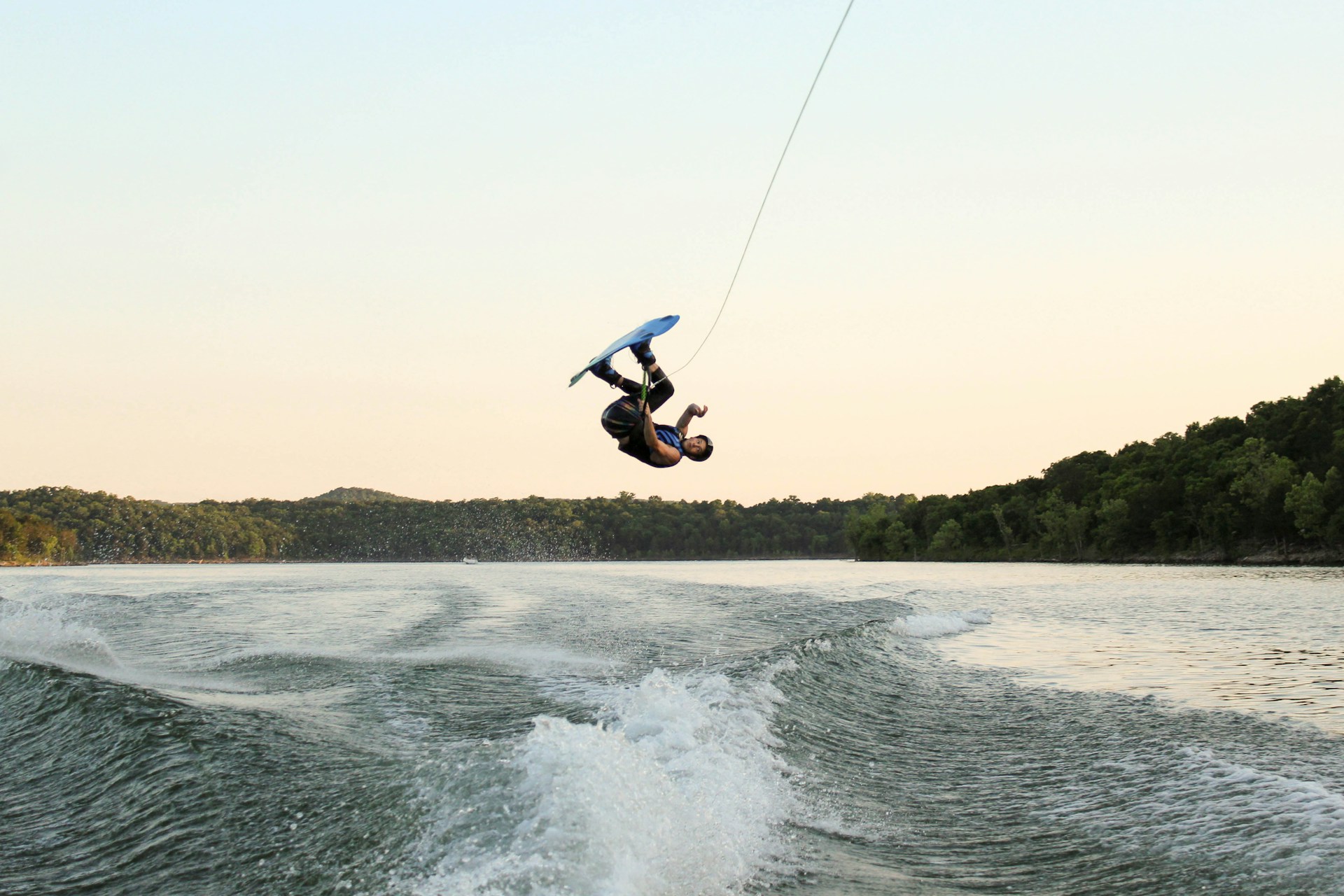Physical Therapy Advice for Water Sports
Paddle, Swim, and Play Smart
Summer in Oregon means enjoying the vast offerings of, i.e., lakes, rivers and streams. Nothing beats the freedom of being out on the water, whether on a paddleboard, in a kayak, or taking it old school with a good old swim. But that freedom can quickly turn into frustration when an injury sidelines your favorite activities.
Water sports injuries affect everyone, from weekend warriors to seasoned athletes. With an effective water sports injury prevention approach, you can continue doing what you love without constantly worrying about missing out on summer fun due to preventable injuries.

What Draws People to Water Sports
The summer season offers water sports for everyone. The calm waters of a lake for example, provide a gentler alternative to ocean conditions, surrounded by stunning natural beauty. Kayakers love the calm bays and protected coves. Stand-up paddleboarders get their full-body workout with killer scenery. Swimmers of all ages jump in for fitness or just to cool off.
But all waters come with hidden dangers that many underestimate. Underwater vegetation can tangle equipment or trap swimmers, and submerged logs or rocks aren't always visible from the surface. Many people misjudge the actual depth of bodies of water. Popular destinations like Shasta Lake draw summer crowds, while Lake of the Woods offers more solitude but requires equal caution.
At higher elevations, water plays by different rules. The water stays cold longer, which means your muscles don't warm up as quickly. Cold muscles cramp more easily and don't stretch as well. You really need to take warm-ups seriously up here.
Then there's wind that can be brutal, especially in the afternoons. Conditions that looked perfect at 10 AM can turn sketchy by 2 PM. Plus, those rocky shores and changing depths keep you on your toes. One wrong step getting out of your kayak, and you're dealing with a twisted ankle.
With more treacherous conditions, paying attention to prevention is key. From smart preparation strategies to knowing when professional help makes the difference, movement truly is medicine. Staying active on the water beats sitting on the sidelines any day.
Physical Therapy for Proactive Water Sports Injury Prevention
Why Physical Therapy Matters Before You Get Hurt
Some injuries sneak up on you. Shoulder problems from all that paddling and swimming. Your back starts complaining after hours hunched over a kayak. These overuse injuries are sneaky because they build up slowly until one day you can barely lift your arm.
Smart athletes don't wait for injuries to happen. They work with physical therapists during the off-season to build strength, fix movement problems, and prep their bodies for what's coming.
A good PT can watch you move and spot trouble before it becomes a problem. Maybe your shoulder blade isn't moving right, or your core is weaker on one side. Fix these things in February, and you won't be nursing a rotator cuff injury in July.

Building Your Foundation
Your core is everything in water sports. That means all the muscles that keep your trunk stable when you're fighting to stay balanced on a paddleboard, for example. A strong core leads to better balance, increased power, and fewer back injuries.
All that paddling, swimming, and throwing your arms around for balance adds up. Your shoulders are another part that takes a beating in water sports. Rotator cuff exercises and shoulder blade strengthening aren't glamorous, but they'll save you from months of pain later.
Don't forget your legs. Water skiing and wakeboarding demand serious leg strength and stability. Even getting in and out of boats safely requires good leg strength and balance.
Moving Better, Not Just Stronger
Strength without mobility is like having a powerful engine with stuck gears. You need both. Dynamic warm-ups get your blood flowing and joints moving before you hit the water. Think arm circles, leg swings, and gentle twists, movements that mimic what you'll be doing out there.
After your session, static stretching helps everything settle back down. Tight hip flexors from sitting in a kayak, stiff shoulders from paddling, and tense calves from maintaining balance should be stretched out before they turn into bigger problems.
Getting Your Technique Right
You might get away with poor technique, but why take the chance? Using proper body mechanics is never a bad idea. At Elevate PT, our physical therapists are experts in analyzing your movement patterns to identify and correct issues before they lead to pain or injury.
Sometimes the cause is clear, like an overly aggressive paddle stroke or an awkward board stance. Other times, it's more subtle; perhaps you're compensating for an old ankle injury from a past water sports mishap, affecting your balance or power without you even realizing it.
Our detailed assessments, including gait analysis and the use of the Forcedecks Dual Force Plate System, can pinpoint these compensatory patterns and imbalances. This comprehensive analysis can catch these underlying issues, addressing potential problems in your shoulders, knees, hips, or back and save you a lot of trouble down the road, keeping you on the water and out of pain.
When Things Go Wrong: Getting Help After Injury
First Steps When You Get Hurt
When you hurt yourself on the water, the first 48 hours matter. Rest, ice, compress, and elevate. The old RICE method still works best for fresh injuries. But don't get stuck there. After the initial inflammation settles, you need to start moving again.
Too many people ice an injury for weeks and wonder why it's not getting better. Early, gentle movement usually beats staying completely still. But there's a difference between helpful movement and making things worse, and that's where professional help comes in.
When to Call in the Pros
If the pain isn't improving after a few days or if it's interfering with your daily life, it's time to see a physical therapist. The same goes for numbness, tingling, or significant swelling. Can't put weight on it or move it normally? Stop waiting and get a professional to look at it to avoid further damage and a longer recovery than necessary. Those who recover fastest are usually the ones who get professional help earliest. Waiting until you're desperate rarely works out in your body's favor.
At Elevate PT, we specialize in working with water sports athletes who need to get back to their activities quickly and safely. Our team understands the unique demands that activities like paddleboarding, kayaking, and water skiing place on your body.
Physical therapists have different specialties, so you want someone who gets what your sport demands and knows how to prepare your body for those specific challenges. Ask about their background, what equipment they have, and how they've helped other water sports athletes.

Essential Water Safety Guidelines for a Day on The Water
Critical Safety Measures at a Glance
Personal Preparation:
• Know your limits and respect them – fatigue leads to bad decisions
• Build your endurance gradually instead of going all-out on day one
• Don't let friends pressure you into activities you're not ready for
• Stay honest about your skill level
Essential Safety Equipment:
• Life jackets aren't just for kids – In Oregon, boats under 16 feet (including all paddlecraft) are required to carry a USCG-approved life jacket for each person on board, with kids 12 and under required to wear them at all times.
• Helmets for anything high-risk, like wakeboarding or water skiing
• Sun protection that actually works – sunscreen, hats, long sleeves
• Decent shoes for those rocky shores
Responsibility:
• Save the drinks for after you're off the water
• Leave the lake better than you found it
• Respect other people using the water
• Know and follow local rules
Environmental Awareness:
• Check the weather and have a backup plan
• Understand how afternoon winds change the game
• Cold water means shorter sessions and warmer gear
• Never go alone – the buddy system saves lives
The buddy system isn't just about emergencies. Your buddy can spot problems you miss, help with gear, and make better decisions when you're tired or cold. Set up simple signals before you head out so you can communicate even when you can't talk.
Getting Back to What You Love
Water sports injuries don't have to be a season-ender. With the right approach to prevention and smart decisions about when to get help, you get to spend more time on the water and less time recovering on the couch.
Physical therapy isn't just about fixing problems after they happen. The best outcomes come from working with a PT to prepare your body for what you're asking it to do. Whether you're a casual paddler or serious about competition, investing in professional guidance pays off in fewer injuries and better performance.
Don't wait until you're hurt to think about injury prevention. A consultation with a qualified physical therapist can identify potential problems and give you a plan to address them. The difference between a great season and a frustrating one often comes down to the preparation you do before you even touch the water.
Movement is medicine, and staying active on the Lake is what makes all the preparation worth it. Take care of your body, respect the water, and you'll be able to enjoy everything this incredible lake has to offer for years to come.
Are you ready to get the care you deserve?
Our trained specialists are ready to help





